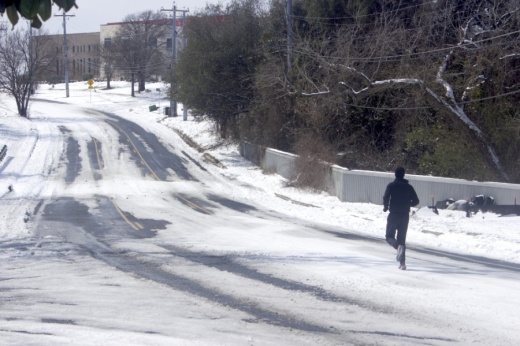ERCOT's role is to act as a traffic manager for energy throughout most of Texas, ensuring that supply and demand match up. At times in the past, ERCOT has had to cut down demand to keep this balance, usually by directing local energy utilities to conduct rolling blackouts.
But in this storm, those blackouts have not been rolling. Many who have lost power have remained without it, because the demand constraints are so severe there is no way to rotate through customers, Austin Energy officials say.
Austin Energy, and many of its counterparts across the state such as CenterPoint Energy and Oncor, have to limit usage so severely in order to adhere to ERCOT's mandate that there is no more power they can cut off without affecting critical infrastructure such as hospitals, fire stations and emergency medical service stations.
"The amount of time that people have had to be out of service for electricity during a time of extreme cold is terrible. It is unacceptable," ERCOT president and CEO Bill Magness said Feb. 16.
Protecting the grid
Although it will be little consolation to those going 36 hours or more with no power, allowing energy use to continue unchecked would create an even more dire scenario than the state is experiencing right now, according to local and state officials.
Without blackouts, continued unchecked demand from Texans expending more energy than usual to heat their homes in the cold would overtake supply and create what Magness called "catastrophic impacts" that would take a long time to fully repair.
"If the demand were to continue to go up and the generating or capacity supply continued to come down, there would be a point when the whole system would go black," Austin Energy General Manager Jackie Sargent said. "That would take not just days to restore power but weeks, and even longer for some customers throughout the ERCOT footprint."
Sargent said Austin Energy is doing everything in its power to avoid cutting power to grids with critical infrastructure, but if the imbalance were to worsen and more energy providers were to become unable to produce, she said she could not fully rule out that step.
"I am hoping that won't happen but I don't want to create a false sense of security because there is the potential the entire grid would go down. If that were to occur, we would not be able to keep those circuits energized," Sargent said.
How did we get here?
Texas, and ERCOT, have dealt with spikes in energy demand before during weather events. In fact, before this storm Magness said the energy grid manager and state lawmakers had a plan to deal with the storm.
"I don’t think there was any underestimation of the seriousness of this storm," he said.
What was surprising to ERCOT was the significant amount of energy production that became unavailable the night of Feb. 14. Winterization efforts that were sufficient for storms in previous years were not enough this year, as wide-ranging issues from ice on wind turbines and solar panels to natural gas plants that could not operate due to the cold temperatures caused a significant shortage.
Dan Woodfin, ERCOT's senior director of system operations, said about 45,000 megawatts of energy generation are offline as of the afternoon of Feb. 16—about one-third of which is from wind turbines while two-thirds of the energy shortage is thermal generation such as gas, coal and nuclear plants.
For context, Woodfin said consumers without power account for about 15,000 megawatts of energy that would otherwise be provided—accounting for 2 million to 3 million Texans without service.
Sargent said the blackouts in Austin will only end when the weather conditions improve and those power generators return, increasing supply so that local utilities such as Austin Energy can safely increase demand without risking the failure of the entire grid.
If the utility company were to turn back on some of its grids that are off—say, by instituting rolling blackouts—it would risk making an already dangerous situation for local residents even more widespread and dire.
"If the load becomes more than the generation, the system will collapse. We're trying to maintain this margin and not go into a total system blackout," Sargent said.





